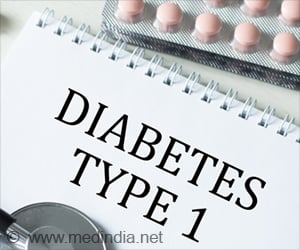Best time to exercise with diabetes: It’s good to exercise in the afternoon or evening for better blood glucose control.

TOP INSIGHT
Afternoon or evening workouts can improve insulin sensitivity, thereby controlling blood glucose control effectively.
Read More..
Can Being Sedentary Affect Blood Sugar Levels
The current global obesity pandemic is partially the result of a lack of physical activity combined with sedentary behavior (prolonged sitting) during the day. Such behavior is linked to an increased risk of developing metabolic diseases including type 2 diabetes (T2D), while earlier research has found that short breaks in sedentary behavior are associated with an improved cardiometabolic profile. This evidence is further supported by experimental studies showing that frequent interruptions of extended sitting with standing or light physical activity resulted in lower triacylglycerol levels and reduced blood glucose, indicating an improved blood sugar profile.High fasting serum triacylglycerol levels may be linked to higher concentrations of fat in the liver, which in turn is strongly associated with insulin resistance. Previous studies have demonstrated that exercise is linked to reduced liver fat and improved insulin sensitivity. The authors hypothesized that taking breaks from sedentary behavior may reduce liver fat, resulting in decreased insulin resistance and ultimately preventing T2D.
As well as the importance of the duration of sedentary periods, it has been argued that the timing of physical activity throughout the day may be a factor in metabolic health. In-vitro studies and research in animals have revealed daytime-dependent changes in exercise capacity as well as associated metabolic risk markers, however few such investigations have been performed in humans and their results are inconsistent. The team therefore aimed to investigate the associations of timing of physical activity and breaks in sedentary time with liver fat content and insulin resistance in a middle-aged population.
The researchers used data from the Netherlands Epidemiology of Obesity (NEO) study, a population-based prospective cohort study designed to investigate processes involved in the development of obesity-related diseases.
Study participants were recruited between 2008 and 2012 with men and women living in the greater Leiden area being invited to participate if they were aged between 45 and 65 years and had a self-reported body mass index (BMI) of 27kg/m2 or higher.
Participants underwent a physical examination during which blood samples were taken to measure fasting and postprandial (after meal) blood glucose and insulin levels, while demographic, lifestyle and clinical information were obtained via questionnaire. They were also screened for suitability for an MRI scan, and roughly 35% of those able to undergo the procedure were randomly selected to have their liver fat content measured using this technique.
Sedentary periods (excluding sleep) were defined as being ≤1.5 MET, while a break in sedentary time was indicated by a spell of activity with accelerations >0.75 m/s2 (as such accelerations have been established by previous research as an accurate indicator of breaking up sedentary time). An intensity of more than 1.5 MET up to 3 MET was defined as light physical activity (LPA), with still higher intensities classed as MVPA.
The day was divided into three blocks: morning (06:00-12:00); afternoon (12:00-18:00); and evening (18:00-24:00), with the proportion of total daily MVPA occurring in each revealing the most active period. If the share of MVPA in each block differed from the others by less than 5%, then it was classified as being an even distribution of activity throughout the day.
This study is based on analysis of results obtained from those 775 participants for whom complete data sets were available. The group were 42% male and 58% female, had an average age of 56 years and average BMI of 26.2 kg/m2. After adjusting for variables such as age, sex, ethnicity and total body fat, the researchers observed that higher total PAEE and particularly MVPA were associated with both reduced liver fat content and reduced insulin resistance.
Best Time to Exercise for Type 2 Diabetes
An association was also found between insulin resistance and the timing of MVPA during the day: performing MVPA in the afternoon or evening was linked to reduced insulin resistance, by 18% and 25% respectively, compared to an even distribution of activity throughout the day, even after adjustment for total amount of MVPA. There was no significant difference in insulin resistance between morning activity and activity spread evenly over the day.Neither the amount of sedentary time nor the number of breaks in sedentary behavior were found to have any favorable association with liver fat content or insulin resistance. The authors suggest: “It could be that in our study the intensity of the activity during the breaks was too light to cause metabolic responses. Most daily activities are of light intensity and because we did not observe an association between LPA and insulin resistance, this may also explain the lack of an association between breaks and insulin resistance.”
Timing of physical activity is a relatively unexplored field in human biology and the mechanisms underlying the potential benefits of timing of physical activity remain unclear. Earlier studies have shown that metabolic responses to high-intensity exercise differed based on the time of day the exercise was performed. In addition, muscular strength as well as the metabolic function of skeletal muscle cells show a peak in the late afternoon, suggesting that being most active during this period may result in a more pronounced metabolic response than activity earlier in the day.
The researchers conclude “in addition to the total amount of daily MVPA, timing of MVPA during the day was associated with reduced insulin resistance: performing most MVPA in the afternoon or evening was associated with up to 25% reduced insulin resistance compared with an even distribution of MVPA during the day. These results suggest that timing of physical activity throughout the day is relevant for the beneficial effects of physical activity on insulin sensitivity. Further studies should assess whether timing of physical activity is indeed important for the occurrence of type 2 diabetes.”
Source-Eurekalert
 MEDINDIA
MEDINDIA




 Email
Email










